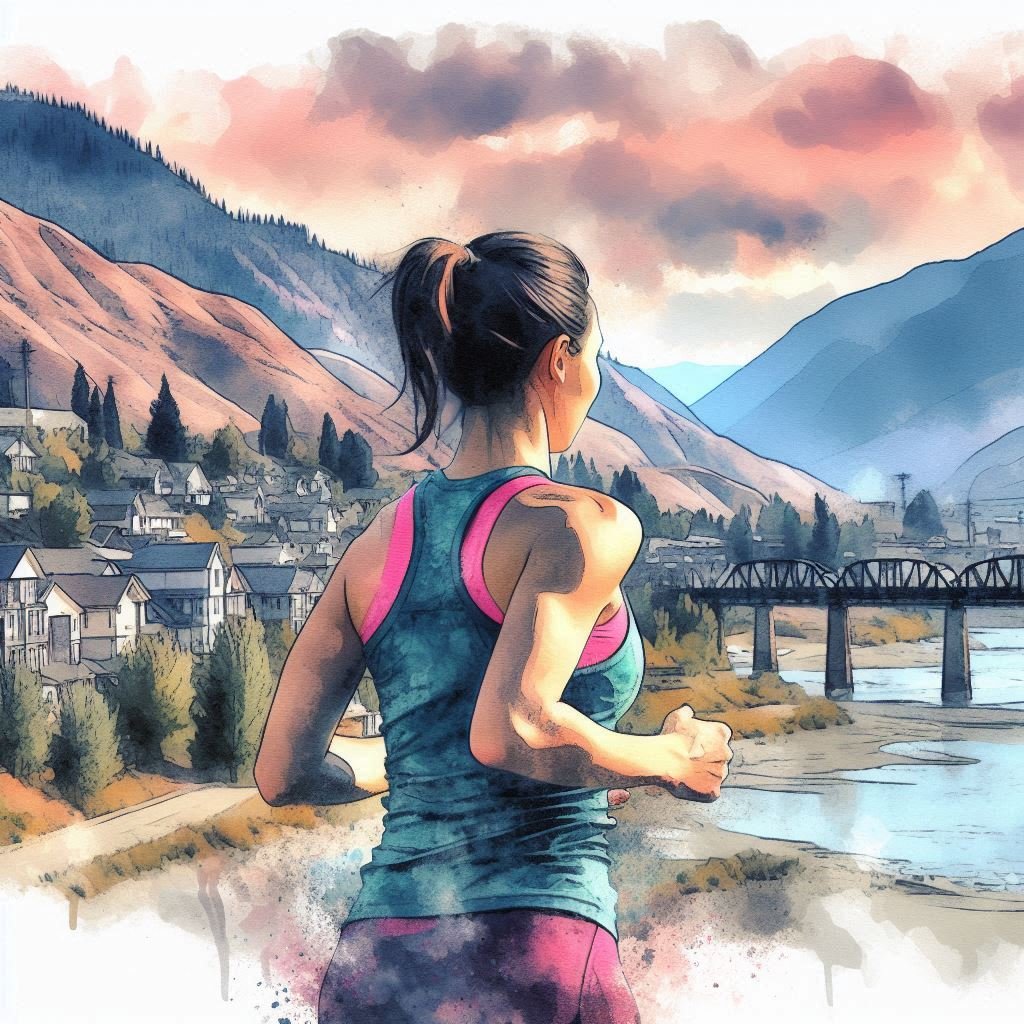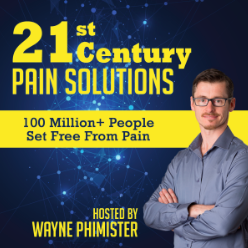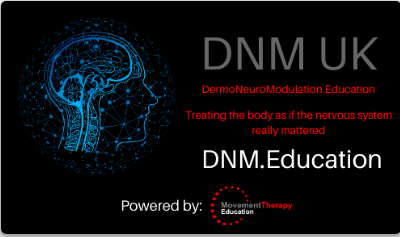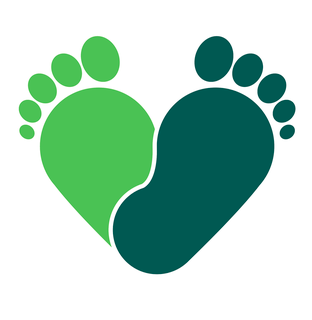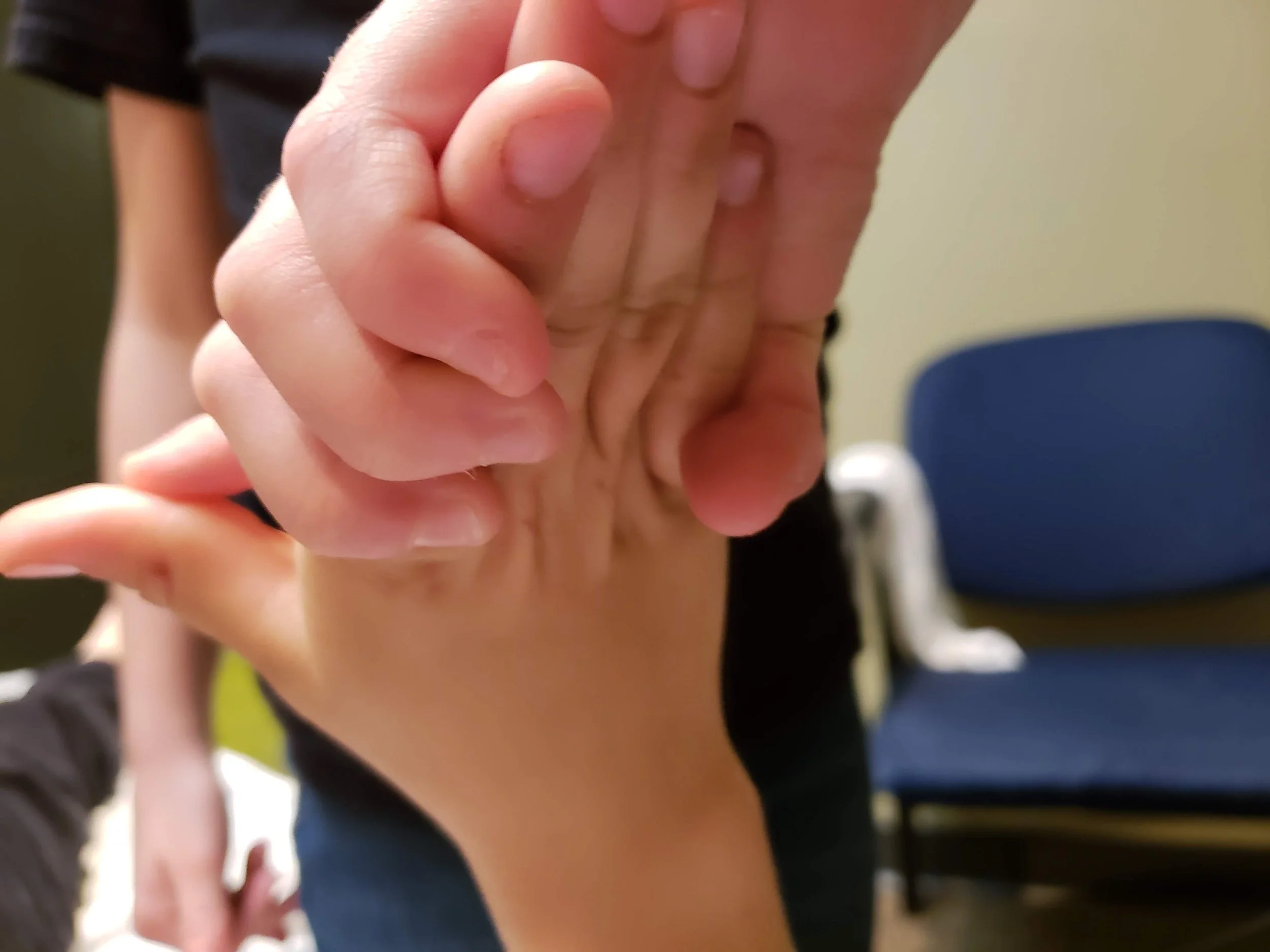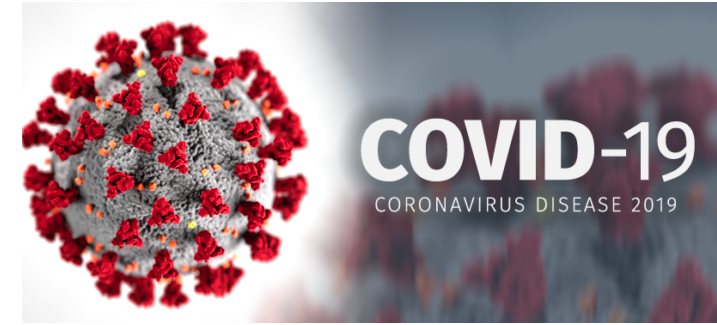In our latest blog post, "The Benefits of a Personalized Plan with Client Input," we delve into the importance of tailored treatment strategies. A personalized treatment plan goes beyond providing immediate relief; it serves as a roadmap for lasting health improvements that resonate with your individual goals and preferences. By actively participating in your treatment planning, you forge a deeper connection to your healing journey, which can lead to greater pain reduction, improved mobility, and enhanced resilience. Join us at well+able as we explore how family-centred, evidence-based massage therapy can help you and your loved ones thrive on your wellness journey!
health tips
News about Well+Able and massage therapy, pregnancy, running, and health
Massage Therapy for Chronic Pain
Chronic pain is a complex issue affecting millions of people, often lasting months or even years. Unlike acute pain, which serves as a warning for injury, chronic pain can persist even after the underlying injury or condition has healed. For those dealing with ongoing pain
Read MoreConditions Treated by Registered Massage Therapists
When people think of massage therapy, they often picture a relaxing session aimed at easing stress or muscle soreness. However, Registered Massage Therapists (RMTs) offer much more than just relaxation. They are skilled healthcare professionals who assess, treat, and manage a range of conditions—often with significant benefits for those experiencing chronic or complex pain. In this post, we'll explore some of the key conditions RMTs commonly treat, helping patients regain comfort, mobility, and quality of life.
Read MoreUnderstanding the Role of a Registered Massage Therapist (RMT)
Registered Massage Therapists (RMTs) are essential healthcare professionals trained to help people address pain and improve wellness. For anyone seeking massage therapy in Kamloops, BC, understanding the RMT meaning and role can make all the difference in finding effective, lasting relief. RMTs use evidence-informed techniques to help people not only manage pain but truly change their pain experience, transforming it into an opportunity for growth and wellness.
Read MoreHow Massage Therapy Can Help Improve Mental Health: Insights from Research
This blog post explores how massage therapy can positively impact mental health by reducing anxiety, easing depression, and promoting overall emotional well-being. Backed by research, it highlights the therapeutic benefits of massage and its role in supporting mental and emotional balance.
Read MoreThe Ten Best Running Shoes for Support: Alleviating Achilles Tendonitis and Plantar Fasciitis
Running is a fantastic way to stay fit and enjoy the great outdoors, but without the right shoes, it can lead to painful conditions such as Achilles tendonitis and plantar fasciitis. Choosing the right pair of running shoes can make all the difference in preventing and managing these conditions. Here are the ten best running shoes that provide excellent support, helping to keep you pain-free and on the move.
Running in Kamloops, BC
Kamloops, BC, offers a diverse range of running trails and scenic routes that cater to all levels of runners. From the challenging terrain of Kenna Cartwright Park to the serene riverside paths along the Thompson River, Kamloops's natural beauty makes it an ideal location for running enthusiasts. However, the varied terrain can also increase the risk of running-related injuries such as Achilles tendonitis and plantar fasciitis. This makes selecting the right running shoes even more crucial for maintaining a healthy and enjoyable running routine in this beautiful region.
Understanding Achilles Tendonitis
Achilles tendonitis is a common injury when the tendon connecting the calf muscles to the heel bone becomes inflamed. This condition often results from overuse, improper footwear, or a sudden increase in physical activity. Runners with Achilles tendonitis need shoes that offer good heel support and cushioning to reduce strain on the tendon.
Top 5 Running Shoes for Achilles Tendonitis
Asics Gel-Nimbus 25
Key Features: Excellent heel cushioning, gel technology, and a supportive midsole.
Why It’s Great: The Gel-Nimbus 25 provides superior shock absorption and stability, crucial for alleviating the strain on the Achilles tendon.
Brooks Ghost 15
Key Features: Soft cushioning, balanced support, and a comfortable fit.
Why It’s Great: The Ghost 15’s smooth ride and ample cushioning make it ideal for runners with Achilles tendonitis.
Saucony Triumph 20
Key Features: Plush cushioning, FORMFIT technology, and durable outsole.
Why It’s Great: The Triumph 20 offers a supportive yet cushioned ride, helping to reduce pressure on the Achilles tendon.
Hoka One One Bondi 8
Key Features: Maximum cushioning, meta-rocker technology, and broad base.
Why It’s Great: The Bondi 8’s thick cushioning and stable design help to absorb impact and reduce stress on the Achilles tendon.
New Balance 1080v12
Key Features: Fresh Foam cushioning, stretchy knit upper, and heel support.
Why It’s Great: The 1080v12 combines a soft, cushioned feel with excellent heel support, making it a top choice for those with Achilles tendonitis.
Understanding Plantar Fasciitis
Plantar fasciitis is a painful condition caused by inflammation of the plantar fascia, the thick band of tissue that runs along the bottom of the foot. It often results in sharp heel pain, especially during the first steps in the morning. Runners with plantar fasciitis need shoes with excellent arch support, cushioning, and a good fit to alleviate pressure on the plantar fascia.
Top 5 Running Shoes for Plantar Fasciitis
Brooks Adrenaline GTS 22
Key Features: GuideRails support system, cushioning, and stability.
Why It’s Great: The Adrenaline GTS 22 provides excellent arch support and stability, reducing strain on the plantar fascia.
Asics Gel-Kayano 29
Key Features: Dynamic DuoMax support, gel cushioning, and flexible upper.
Why It’s Great: The Gel-Kayano 29 offers a supportive and cushioned ride, ideal for managing plantar fasciitis.
New Balance 990v6
Key Features: ENCAP midsole, supportive design, and durable construction.
Why It’s Great: The 990v6 combines stability and cushioning, offering excellent support for plantar fasciitis sufferers.
Hoka One One Clifton 9
Key Features: Lightweight cushioning, meta-rocker technology, and supportive fit.
Why It’s Great: The Clifton 9 provides a cushioned and supportive ride, reducing the impact on the plantar fascia.
Saucony Guide 16
Key Features: PWRRUN cushioning, medial post support, and structured fit.
Why It’s Great: The Guide 16’s combination of cushioning and support helps to alleviate foot pain caused by plantar fasciitis.
Final Thoughts from Well+Able Integrated Health
Choosing the right running shoes is essential for preventing and managing conditions like Achilles tendonitis and plantar fasciitis. At Well+Able Integrated Health, we understand the importance of proper footwear in maintaining a healthy and active lifestyle. Our team of Registered Massage Therapists (RMTs) have a particular focus on treating sports injuries and helping individuals with chronic, complex, or ongoing pain complaints. Investing in shoes that offer the proper support, cushioning, and fit can significantly impact your running experience. Remember to replace your running shoes regularly, as worn-out shoes can contribute to injuries. Happy running in Kamloops!
Revolutionizing Manual Therapy: The Rise of Dermoneuromodulation
Dive into the world of manual therapy with our comprehensive guide to Dermoneuromodulation (DNM). Learn about the groundbreaking techniques pioneered by Diane Jacobs and continued by practitioners like Michael Reoch, and uncover how DNM leverages the nervous system and skin to modulate pain perception. Discover the evolution of manual therapy, the importance of understanding the sensory nervous system, and practical insights into implementing DNM in your practice. Whether you're a seasoned therapist or new to the field, this blog post provides valuable insights into the future of pain relief through innovative manual therapy approaches.
Read MoreListen to past interview podcasts of Michael and Marcy Reoch
Massage Therapy Now Episode 17 - DermoNeuroModulation with Mike Reoch
2020-01-21
If you've not much idea what DermoNeuroModulation is as a model within which to approach Manual Therapy, in this podcast Mike and I break down the DNM model. Along the way, we explore a few other ideas that have influenced his own learning as a Registered Massage Therapist and how he uses these to put together the various seminars he teaches.
Massage Therapy Now Episode 6 - Marcy and Mike Reoch
2018-11-05
Marcy and Mike Reoch run their own Registered Massage Therapy Clinic in Ladner, BC. In this episode, we talk about the benefits and challenges of being a couple running a business together, how family values influence their business
People Pain & Practice 24 Jun 2019
#5 - Mike Reoch - Dealing With Burnout, Foundational Knowledge and Neurocentric Massage Therapy
Play • 43 min
This conversation with Mike Reoch was an absolute pleasure. It was a breeze chatting with him and we could've gone on for hours. We talked about handling mental burnout in the profession, making sure you have your physiology down and approaching Massage Therapy from a neurocentric lens. There are plenty of gems to take away from this episode and I hope you all learn as much as I did!
Michael Reoch's course schedule for 2022
Hopefully, this year, travel will open up. Below is the current schedule of continuing education courses offered by Michael Reoch. Please follow the links below for more information.
Movement Therapy
Barefoot Physio
COVID-19 CLOSURES
To our patient community,
We would like to thank you for choosing Marcy and Mike at Well+Able as your RMTs and we remain committed to ensuring that we continue to keep all of you front of mind in our decisions. Because of the unprecedented and unforeseeable COVID-19 global pandemic that is putting you, your loved ones, and our own health at risk, we are unable to provide our role in your care and maintain social distance. It is for this reason that we have no choice but to close our clinic effective at 9 pm Thursday, March 19 until we are legislated to go back to work. We do not take this situation lightly as we understand the impact that this can have on your healthcare. Please email us directly at michael@wellandable.ca or marcy.reoch@gmail.com if you have any comments or questions about future appointments.
Thank you for your understanding as we come together as a community to fight this virus pandemic.
Yours in health,
Marcy Reoch, RMT and Mike Reoch, RMT at Well+Able
Price Changes for 2019
Please be aware that the prices for RMT services starting January 15, 2019 will be changed to reflect our increased expenses and comply with our RMT fee schedule. Thank you for your understanding.
‣ 20 minutes massage Therapy $45.00 ‣ 30 minutes Massage Therapy $70.00 ‣ 45 minutes Massage Therapy $100.00 ‣ 60 minutes Massage Therapy $120.00 ‣ 90 minutes Massage Therapy $190.00 ‣ 120 minutes Massage Therapy $190.00
Podcast interview for Massage Therapy Now
Marcy and Mike Reoch run their own Registered Massage Therapy Clinic in Ladner, BC. In this episode we talk about the benefits and challenges of being a couple running a business together, how family values influence their business
Read MoreNeurocentric Approach to Massage Therapy
What I propose is an approach to these people’s painful conditions that puts the nervous system first. Specifically, I’m looking at pain that originates from a mechanical deformation of nerve tissue and that can change with position or movement.
Read MoreWhat to expect with your first Massage Therapy visit
A short video by the RMTBC on what to expect from a Massage Therapy visit with an RMT
What is the single best thing we can do for our health?
walking has huge benefits for health. If you can manage to walk for 30 minutes a day not only will your chances of a longer and healthier life improve but you will also have less neck, shoulder and back pain.
Please watch this short video by Dr. Mike Evans explaining how simply going for a walk is one of the best things you can do your your health
Photo by Moncherie/iStock / Getty Images
Are Tension-Type Headaches Treated by Massage Therapists?
Tension-Type Headaches: what can you expect?
According to the International Association of the Study of Pain (IASP), Tension type headaches (TTH) are:
“headache attacks with mild to moderate pain intensity and is often described as having a pressing or tightening (non-pulsating) quality that is not aggravated by routine physical activity, such as walking or climbing stairs. The pain lasts for at least several hours to days and is predominantly felt bilaterally.”
TTH originates from a combination of tissue sensitivities in the head and neck as well as how the nervous system interprets the signals from those tissues. Development from episodic to chronic TTH is thought to be accompanied by increasing Central Nervous System sensitivity to the tissue signals like a car alarm that is triggered by a loud truck. Diagnosis of TTH is based on a “featureless” headache and normally results in a neurological examination. Most commonly found are tender spots around the head and neck. Additional diagnostic workup by your doctor is important if you have additional symptoms other than headache. Chronic TTH is often associated with medication overuse.
Tension-type headache is the most common form of headache. It can be categorized into three subtypes according to the International Classification of Headache Disorders based on headache frequency:
(1) infrequent episodic TTH (<12 headache days/year), (2) frequent episodic TTH (12-180 days/year), and (3) chronic TTH (>180 days/year)
(2) frequent episodic TTH (12-180 days/year)
(3) chronic TTH (>180 days/year).
Stress seems to play a big role in Tension Headaches. Managing that stress can be beneficial in reducing frequency and duration of these headaches.
According to the International Association of the Study ofPain:
The lifetime prevalence of episodic TTH is almost 80%, and that of chronic TTH is 3%. Women are slightly more affected than men. The age of onset peaks between 35 and 40 years, and prevalence declines with age in both sexes
o Headaches are the most prevalent neurological disorders and among the most frequent symptoms seen in general practice.
o 50% of the general population have headaches during any given year, and more than 90% report a lifetime history of headache.
o The average lifetime prevalence of migraine is 18%, and the estimated average prevalence in the past year is 13%.
o The prevalence of migraine in children and adolescents is 7.7%.
o Tension-type headache is more common than migraine, with a lifetime prevalence of about 52%. However, only frequent or chronic tension-type headaches are disabling.
o 3% of the general population have chronic headache, i.e., a headache ≥15 days per month. They are the most severely disabled.
Clinically, this is the most easily and effective type of headache for an RMT to treat. In our experience, after an initial assessment and treatment, future treatments usually should be around 30 minutes 1-3x a week with a follow up in 1-2 weeks depending on severity and chronicity. After your first visit the normal course is of at least a 50-80% resolution of head pain around 30 minutes after the massage treatment. This relief should last from 3 days to 2 weeks and will increase with future treatment.
Make sure to ask for some home care such as exercises and or movements which will depend on the tissues and structures that are sensitized then work together with your Massage Therapist to create a plan of action that is effective and obtainable.
Our Aging Population: Mobility, Wellness and Independence
What a Great Weekend!
We are always looking at increasing our skills and knowledge to better serve our patients. On May 5th, Marcy and Mike attended the sold-out RMTBC symposium: Our Aging Population: Mobility, Wellness and Independence.
Registration at the beautiful Anvil Centre in New West
After a rousing First Nations welcome by Coastal Wolfpack, Isobel Mackenzie, B.C. Seniors Advocate started off the day with a fascinating, in depth look at the demographics and conditions of todays' seniors population. Her talk was a great start to the days theme that Massage Therapy can play a key role in keeping mobility and wellness in seniors thus helping you keep your independence as you age.
The first keynote address was Dr. Lorimer Moseley, one of the most respected pain researchers in the study of pain. Dr. Moseley is a fantastic presenter. He has been a strong promoter in giving people with persistent pain more tools to manage their pain.
The second Keynote was with Dr. Karim Khan who is a MD at UBC as well as the editor of the British Journal of Sports Medicine. He gave a great talk on how diet and exercise is very strong medicine in preventing illness. The day ended with an esteemed panel of Andrew Nemeth, Yvonne Poulin and Dr. John Sloan who provided tremendous information on their work with seniors.
simple lifestyle modulators: diet, exercise, avoidance of smoking and excess alcohol, together with moderate physical activity reduce colorectal cancer by 50%
- Karim Kahn
Dr. Karim Khan is a leader in sports medicine and rehabilitation, known for advancing evidence-based practices. As a physician and researcher, he has greatly contributed to injury prevention and recovery. Dr. Khan promotes holistic health, focusing on physical recovery and overall wellness. His approachable nature and expertise make him a trusted resource for athletes and individuals seeking optimal health. He inspires colleagues and patients, solidifying his role in enhancing the community's health and performance.
From left: Gordon MacDonald, Peter Behr RMT, Yvonne Poulin RMT, Dr. John Sloan,
Andrew Nemeth RMT.
Mike catching up with colleagues
We had a fun and informative Saturday! Thanks to the RMTBC who always put on a world class symposium every year. Also, I would like to thank them for some of the photos and content of this post.
Donations to Canada Red Cross
Help those people affected by the recent Fires in BC
Friday, July 28, 2017 all Massage Therapy treatments will be by donation only. All proceeds collected will be donated to the Red Cross Canada for the BC fire appeal.
Also for the rest of July, all evacuees and First Responders affected by the fires can ask for treatment without charge.
Just our way of helping out those in need.
Holidays Can Be A Pain in the Neck
By: Dr. Sereena Uppal
Holidays can be a pain in the neck if you relax too much. BC’s Chiropractic Doctors offer a few suggestions for holidays.” It is common for many people to visit their chiropractor and massage therapists following the holidays with physical complaints that are related to doing too little or too much over the holidays.
According to the BC Chiropractic Association, here are some back health tips on holiday to make your time off more enjoyable and pain free:
- If you have to drive more than two hours to visit friends and relatives, take a break; get out of your vehicle and stretch. This temporarily restores normal posture, which will help prevent a recurrence of neck or low back conditions.
- When loading your vehicle for the trip, organize your luggage and packages into smaller loads, as opposed to one large suitcase, cardboard box or carrying case.
- Wear your seatbelt. Adjust vehicle headrests so that they are no more than two inches behind the centre of the back of the head. Many of the estimated 20 million car accident victims suffering whiplash injuries in North America could have prevented much of the injury had their vehicle seat headrests been adjusted properly.
- It’s OK to be a couch potato this weekend, but don’t slouch on the sofa and don’t fall asleep on the recliner, as two or three vertebrae in the spine can assume a sharp angle. When you sit up, the normal movement isn’t restored. “We often see people walking into our offices with their heads sideways, because by slouching, the position of the joints irritates the nerves and blood vessels, causing muscle spasm,” says Dr. Nixdorf.
- Avoid bending directly over the oven door to lift out the turkey. Crouch down, pull out the oven shelf, and use your legs for better balance. Avoid putting all the leverage on the lower spine. This helps reduce the sharp leverage on the lower spine.
Shanghai Cold Noodle Salad
Courtesy of:
Tara Binder from WHAT the HECK do I Eat NOW?
Ingredients:
1 lb thick Chinese wheat noodles (or Japanese style Udon)
1/4 cup ketchup
3 1/2 tbsp sesame oil
3 1/2 tbsp soy sauce
2 tbsp brown sugar
2 tsp salt
1 1/2 tsp lime juice
1/4 cup chopped green onion
2 carrots peeled and shredded
1 small zucchini cut into matchsticks
1 red pepper cut into matchsticks
1 tbsp toasted sesame seeds
1 tsp crushed red pepper flakes
Instructions:
Boil the noodles as per package direction.
When done, immediately drain and rinse well with cold water to chill.
In a large bowl, whisk together ketchup, sesame oil, soy sauce, brown sugar, salt, and lime juice until the brown sugar has dissolved.
Add green onion, carrot, red pepper, zucchini, sesame seeds and red pepper flakes and stir well to coat.
Add noodles and toss gently.
Chill at least 2 hours before serving.
To check out more recipes from WHAT the HECK do I eat NOW, click her website: www.whattheheckdoieatnow.com

